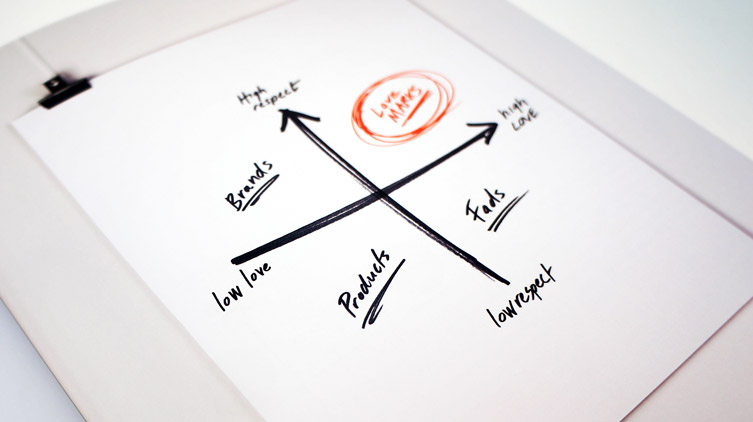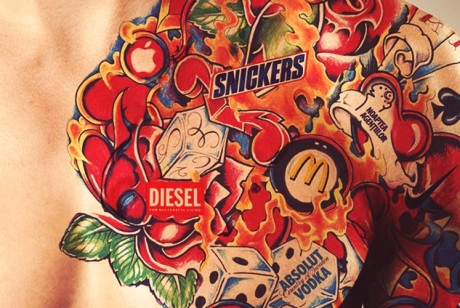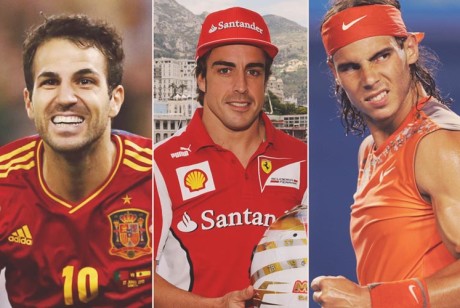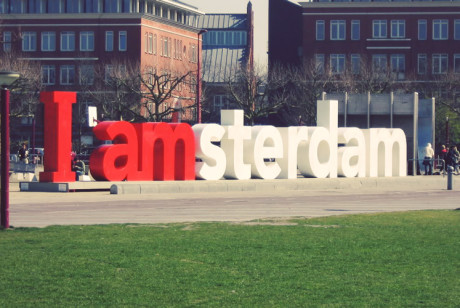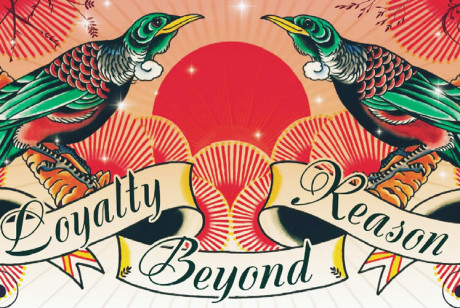Freedom Train
Monday, 4 August 2003 - Seattle, USA

Presentation Summary
An address to the Tuck Academy of Management Symposium: ‘Why Smart Executives Fail’. Smart executives have a new job – turning their organization into a Lovemark. A Saatchi & Saatchi case-study on transformative leadership. This presentation explores the power of language and tells the story of Saatchi & Saatchi’s turn around. Through freedom and inspiration, ‘nothing is impossible’.
I’m going to talk to you about LOVE and INSPIRATION.
Failure to learn from mistakes and open the company culture to ideas is like driving blind. I arrived at Saatchi & Saatchi 6 years ago in 1997. In the rear review mirror was a legacy of blinding success and expansive failure. The company was demoralised, losing money, and clients, and was crippled with debt.
I stood at the edge of possibility – a horizon of challenge before me.
Since those dark days Saatchi & Saatchi has grown revenue and profits for five years running, recession or no recession. We listed at one pound ten pence in 1998 and sold the company two years ago for five pounds a share.
Last year we were No. 1 in the Global New Business league and were declared Best Global Network by both Ad Week and Ad Age in January 2003. The only time the industry has agreed on anything!!
The first thing I did five years back was lose the legal department. No lawyers, no legal problems – how’s that for linear logic!
Next we set the challenge. To change from perhaps the most famous advertising agency in the world to the hottest ideas company on the planet. My aim was to unleash the power of ideas by inspiring 7000 people to be the best they could be.
At executive level there was no turkey shoot a la Jim Collins. I said to the incumbent team I’ll inspire you, you inspire me. We’ll re-calibrate in two years: If we’ve survived! At the heart of our company since our founding in 1975 is our spirit – NOTHING IS IMPOSSIBLE.
We focused on the top-line not the bottom, on Inspiration, not Leadership, on performance, not promises, on employees not shareholders, on turning existing clients into PICS not the aimless ambulance chasing of specious new business, on the work not the process, on teamwork not on individuals, on businesses that were built to last (P&G, General Mills, Toyota, J&J) not on the .com .gone idea du jour…and on Ideas not Ads. We believed in the Age of the IDEA and we started by interrogating a basic of our business. Brand management.
I found two problems.
Brands and Management
Against the forces of commodification, brands were out of juice. In the rush of the attention economy… intense competition, more demanding consumers, erosion of distinctions, rapid imitation of innovation, and endless recycling of value had devalued respect. High respect was just a table stake for brand leadership.
On the management side, the problem was equally alarming. The right strategy, structure and systems were no longer the source of competitive advantage. Leadership too was flawed. What do all leaders need to succeed? Followers. It’s still tough to find people with “born to follow” tattooed on their arms!
I went looking for ideas that could pump life back into brands and take businesses past incrementalism. The search led me to language.
Finding the right language takes you beyond marketable product. It can create higher orders of relationship, business, product, service, design and performance.
As Alan Webber at Fast Company reminded me, it can create whole new paradigms and categories.
Out of this truth rose two powerful one-word equities. The first is EMOTION.
Emotion is an unlimited resource with unlimited power. Neurologist Donald Calne put it brilliantly – “The essential difference between emotion and reason is that emotion leads to action while reason leads to conclusions.”
Lovemarks
In the crucible of emotion, Saatchi & Saatchi developed Lovemarks – powerful emotional connections between a company, its people, its brand and its customers. We recreated our global company around an idea to create and perpetuate Lovemarks, our company focus. We move brands from high respect to high love – top right on this Love /respect axis.
The outcome is the ultimate premium profit generator – a brand that earns loyalty beyond reason.
Lovemarks are not owned by companies, managers or marketers. They are owned by the people who love them. They personalise the mass market and create a market of one. Consumers with a voice. Democracy in motion.
Lovemarks take loyalty beyond reason through three heat signatures
Mystery to draw together past-present-future, great stories, dreams, myths and icons and the inspiration that give a relationship its texture.
Sensuality to enthrall the emotions. Vision, sound, smell, touch, taste. This is how we experience the world.
The warm breath of Intimacy. Empathy, commitment and passion. The intimate connections that today no one takes for granted.
The job of every smart executive is to turn their organisation into a Lovemark.
- Harley Davidson succeeded. Suzuki? Not a show.
- Here’s an iMac; here’s a Thinkpad. Sorry IBM.
- Amazon is a Lovemark. Barnes & Noble is a bookmark.
Saatchi & Saatchi has a mega-mega global client in Toyota. Car guys always ask each other “How much metal did you move?” Toyota fell in love with Lovemarks when we asked them “How much does the metal move you?” President Fujio Cho set Toyota Managers a new goal earlier this year: “To capture the hearts of customers at all times.”
Peak Performance
Lovemarks are the destination great brands and businesses must aspire to. My focus today is how to get there. The second one word equity is INSPIRATION.
If management is doing things right and leadership is doing the right things, inspiration is about being the best you can be. At Saatchi & Saatchi I swapped command and control for unleash and inspire.
Why?
- Inspiration unlocks human potential
- Inspiration is non-coercive
- Inspiration is non-hierarchical
- Inspiration is viral and contagious
- Inspiration builds to a tipping point
- Beyond inspiration, there is magic
Inspiration takes you from mediocre performance through high performance to Peak Performance.
I developed Peak Performance with my colleagues Mike Pratt and Clive Gilson at the Waikato Management School in New Zealand. Research took four years.
We analysed the reasons for long-term organisational success. We chose the tough world of elite professional sport where there is no place to hide. You win. You lose. You try to win again. The performance measures are utterly transparent.
The challenge was to account for patterns of behaviour that made rapid imitation by competitors very difficult, if not impossible.
We found the answer in the human spirit. Four words in Sydney’s book nail it – “It’s the people, stupid”.
Inspirational people transform organizations. Inspiration arouses people’s long-term commitment to exceed their personal best. Not performance measures, not the competition, their personal best.
The indispensable element in every Peak Performing Organization is the people at the centre. We call them Inspirational Players. The term sets people alight.
Being a Manager or even a Leader is just another label. Stepping up to being an Inspirer – this demands personal transformation as part of organizational transformation.
Inspirational players at all levels in the company go through our Peak Performance programme. Most change workshops are organization-purpose down. Ours works indvidual-purpose up. Charged with purpose and relevance, our most inspired people infect colleagues and clients with inspiration. They are our tipping point to Peak Performance.
We’re taking Peak Performance to the forefront of global business. One of our two largest clients is the world’s largest fast-moving consumer goods company. I worked at Procter &Gamble for 7 years. In the late ’90s, P&G earnings stagnated, product investment did not get returns, costs blew out. Their stock price halved. The CEO resigned.
In 2000, Inspirational player A.G. Lafley took charge. At the end of 2000 I presented Peak Performance and Lovemarks to P&G’s Global Leadership Council. We held a first workshop with P&G’s top Inspirational Players in May 2001.
Since then I’ve worked with A.G. on unleashing and inspiring P&G. Four times a year we hold Peak Performance Workshops for P&G Inspirational Players. Fifteen players from around the world join us for a full two days. We’ve run over a dozen sessions now, including one in Bentonville, with P&G’s 8th biggest county – Walmart!
If you read Fortune, BusinessWeek or Time, you’ll know about the Lafley effect. He is walking-inspiration. Top management has been revitalized. The organization is quicker, more focused, with a new spirit of enthusiasm. P&G’s share price has doubled. They’re moving to Peak Performance. Our next book, out in 2004, will tell the Saatchi and P&G Peak Performance stories.
Here’s the mainframe of Peak Performance theory with examples. Organizations progress through four stages.
- Purpose
- Practices
- Potency
- Performance
I only have time to talk about one, Purpose – because it drives the model. There are three concepts:
- The Inspirational Dream
- The Greatest Imaginable Challenge
- The Focus.
First the Inspirational Dream. Dreams make stuff happen. Martin Luther King didn’t say “I have business plan”, right? Or a goal, or a vision. Nor did Microsoft. Gates dreamed of a PC on every desk.
A dream is at the heart of great endeavours.
Saatchi & Saatchi’s dream is “to be revered as the hothouse for world-changing creative ideas that transform our clients’ businesses, brands and reputations.”
We’re helping P&G share an inspirational dream around and towards Lovemarks. Their dream? “To make every day a little bit better by creating and building brands that people love.”
The dream in action is the Greatest Imaginable Challenge. It is the most demanding and rewarding achievement imaginable. It provides the business rationale – measurable, achievable, stretching, exciting. Saatchi & Saatchi’s Greatest Imaginable Challenge is “To win our revenue and profit race by selling the most highly valued ideas.” It’s about money. It’s about the power of ideas.
Focus is the dream given a deadline. Achieve a result – in the next 100 days, this week, this day, this hour, this second.
I re-focussed Saatchi & Saatchi from “Creating the best advertising in every category in every country” to “creating and perpetuating Lovemarks”.
Procter & Gamble’s focus is always win the two moments of truth. Currently, the first moment occurs 30 million times a day when a P&G product is chosen. The second two billion times a day when is it used.
Wind Up
That’s Peak Performance. It builds a track to Lovemarks. In the emotion economy, Lovemarks will rule. When I first said the L- words four years ago, smart executives headed for the hills. Ever since, they’ve been hitching their wagon to it.
At surface level we’ve seen it rippling across sectors. Early on it was the car guys.
- Chrysler launched a new tag-line Drive = Love.
- Volkswagen stamped love on the bug and
- Ford put their heart into it.
Recent examples…
- Red Lobster Restaurants has gone from “Go overboard!” to “Share the love”.
- McDonald’s from “Smile!” to “I’m lovin’ it.”
At a deeper level Lovemarks are gathering into a centre current. Becoming and creating Lovemarks is shaping business strategy. It is framing purpose. It is focusing communication. The New Yorker magazine, for example, is building its fall marketing campaign around Lovemarks.
What started as a transaction and deepened into a relationship has moved on. In the new reality, successful business will be a conversation of the spirit. The paradox of less is more. Less logic. Less research. Less analysis. More mystery. More sensuality. More intimacy. Less head. More heart.
How might smart executives learn? By joining this conversation of the spirit. By learning and living its lexicon. The Is and the Es
- I for Ideas, Imagination, Intuition, Insight and Inspiration.
- E for Empathy, Enchantment, Excitement, Edge and Emotion.
